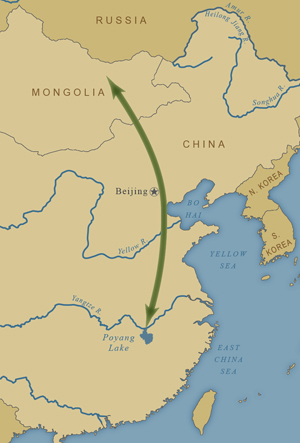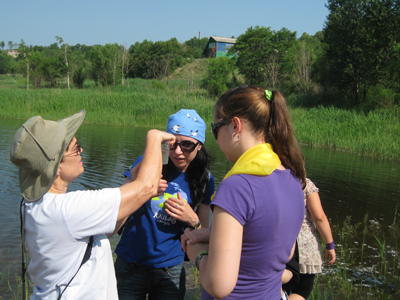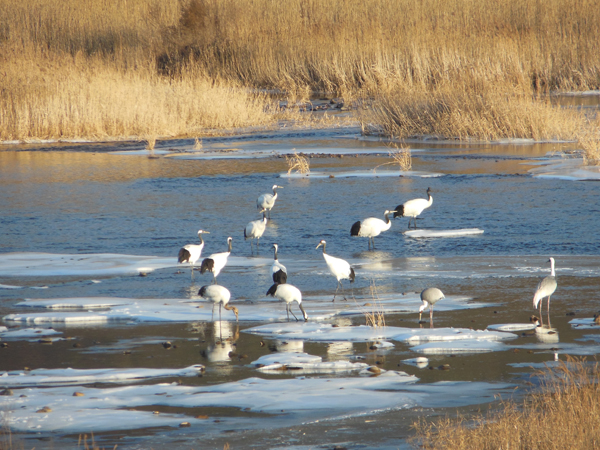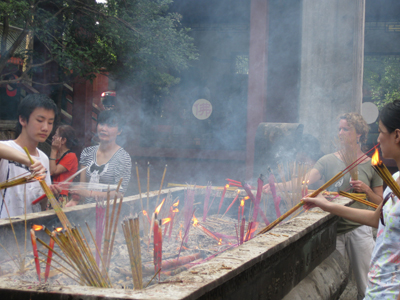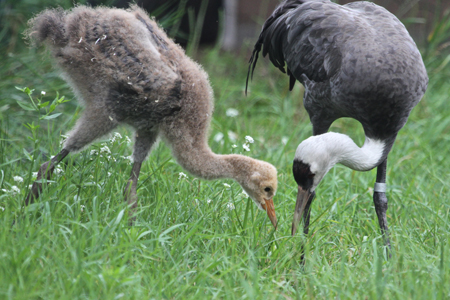
In August 2014, a team of scientists from the International Crane Foundation, Mongolian Wildlife Science and Conservation Center, Mongolian Academy of Sciences, and U.S. Forest Service traveled to the Khurkh and Khuiten River Valleys of northern Mongolia to study this important breeding area for White-naped Cranes.
Category: East Asia
International Teaching Opportunity for Milwaukee Co Educators!
 ICF is accepting applications from teachers and nature center educators working in Milwaukee County, Wisconsin to lead a teacher workshop and summer camp at Muraviovka Park (Amur Region, Russia) in June-July 2015.
ICF is accepting applications from teachers and nature center educators working in Milwaukee County, Wisconsin to lead a teacher workshop and summer camp at Muraviovka Park (Amur Region, Russia) in June-July 2015.
Notes from the President: Cheorwon Basin Winter Refuge for Cranes in Korea
 Can you imagine seeing seven species of cranes in one morning?!? Today our group visited the remarkable Cheorwon basin of South Korea near the Demilitarized Zone that divides the Korean peninsula. Cheorwon is renowned for the large concentrations of wintering Red-crowned and White-naped Cranes that feed on waste grain in this agricultural landscape – one of the very best places to see these two endangered species.
Can you imagine seeing seven species of cranes in one morning?!? Today our group visited the remarkable Cheorwon basin of South Korea near the Demilitarized Zone that divides the Korean peninsula. Cheorwon is renowned for the large concentrations of wintering Red-crowned and White-naped Cranes that feed on waste grain in this agricultural landscape – one of the very best places to see these two endangered species.
One Helps One Program
 This summer, I had the chance to go to Caohai and talk with many of the girls who are part of the One Helps One Program and learn about their families, schools, hobbies, and their plans for the future.
This summer, I had the chance to go to Caohai and talk with many of the girls who are part of the One Helps One Program and learn about their families, schools, hobbies, and their plans for the future.
Visitors to ICF May See Rare Hooded Crane Chick

Wasabi, a rare Hooded Crane, hatched at the International Crane Foundation on June 6, 2014. But even before that, its journey was a colorful one. Eggs produced by ICF’s captive flock are either destined for release into the wild – like those of Whooping Cranes – or play an important role as captive breeding birds to protect wild cranes for future generations.
Travels with George: Mongolia 2014
 On a wide plain beside the town of Binder in northeast Mongolia, the nation’s first Crane Festival was held on June 13, 2014. Our group and other guests sat comfortably under a large colorful tent with one side open to a field surrounded by other tents, exhibits, games, vehicles, and horses. A sequence of activities unfolded for six hours, including ethnic dancing, singing, dramas, and dances about cranes, along with the three big traditional crowd pleasers — wrestling, horse racing, and archery.
On a wide plain beside the town of Binder in northeast Mongolia, the nation’s first Crane Festival was held on June 13, 2014. Our group and other guests sat comfortably under a large colorful tent with one side open to a field surrounded by other tents, exhibits, games, vehicles, and horses. A sequence of activities unfolded for six hours, including ethnic dancing, singing, dramas, and dances about cranes, along with the three big traditional crowd pleasers — wrestling, horse racing, and archery.

